Smallpox. Later, infectious diseases
The second 'River Hospital', the Orchard Hospital opened just south of the Long Reach Hospital in the spring of 1902 as another temporary hospital for smallpox patients. Built on 63 acres belonging to the Joyce Green estate, it had cost £135,359 and had 800 beds. By this time the smallpox epidemic, which had begun the previous year, was already subsiding.
The Hospital, made of iron and wood, was furnished with surplus furniture from the nearby Gore Farm Hospital in Dartford. Gas lighting was used in all the wards. A temporary Medical Superintendent, Dr Rundles, was appointed, who would also provide cover for Dr. T.F. Ricketts, the Medical Superintendent of the smallpox ships and Long Reach Hospital.
In 1910, with the decline of smallpox outbreaks, the service was reorganised and the Hospital became a fever hospital. It spent much of its time closed, being opened only for epidemics, mainly of scarlet fever and diphtheria.
It was empty at the outbreak of WW1 but in 1915 it became the Orchard Military Hospital for sick and wounded soldiers. In October 1916 it became the 3rd Australian Auxiliary Hospital under the command of Lt.-Col. H. Arthur Powell. The Australians greatly improved the site, even adding an operating theatre. In April 1917 the Australian Red Cross took control of the Red Cross store, which ambulant patients could visit to get items that would make their stay more comfortable. Bed-ridden patients were visited by the store workers and given cigarettes and chocolate. Every patient received 30 cigarettes a week. The number of beds increased from 800 to 1000, and finally to 1200; additional nursing staff was provided by the Women's Army Auxiliary Crops. From October 1915 until December 1918, 56,441 troops had been treated. At the end of 1918, when the war had been over a month, 884 soldiers still remained in the Hospital. Many of the soldiers married local Dartford women. The Australian government later presented the town of Dartford with a German gun, captured by the Australians, in appreciation of the hospitality extended to the troops during the war (the gun was later sent for scrap during WW2 when metal was needed for the war effort).
After the war the Hospital remained mostly closed, opening occasionally for epidemics. In 1939, at the outbreak of WW2, it received chronically sick patients temporarily evacuated from the Midlands. The mortuary was prepared as a decontamination hut for gas victims. The wooden ward buildings were most vulnerable to incendiary bombs. In 1940 the east buildings were destroyed by incendiary bombs.
The damaged buildings were demolished and the remaining ones used as a pig farm by Joyce Green Hospital, until they too were demolished.
Present status (April 2009)
Apart from some derelict buildings, nothing remains. The approach road to the former Hospital off Joyce Green Lane is blocked by a large pile of rubble, with barbed wire fences behind. It was possible to gain access to the rough unmade track further along the fencing but where the Hospital once stood is now scrub woodland.
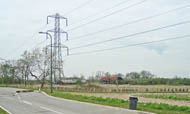
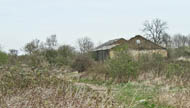


Derelict buildings on the eastern part of the Hospital site can be seen from the Joyce Green perimeter road.
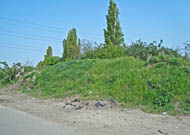
The blocked entrance to the Hospital driveway.

Looking along the driveway.
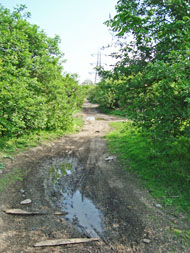
Looking east from the driveway towards the Hospital site.
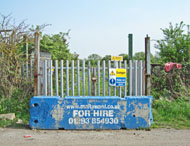
Payne F 2001 Joyce Green and the River Hospitals. Self-published.
http://members.iinet.net.au
www.bexley.gov.uk
www.dartford.gov.uk
www.dartfordarchive.org.uk
www.dartfordhospitalhistories.org.uk
Return to home page